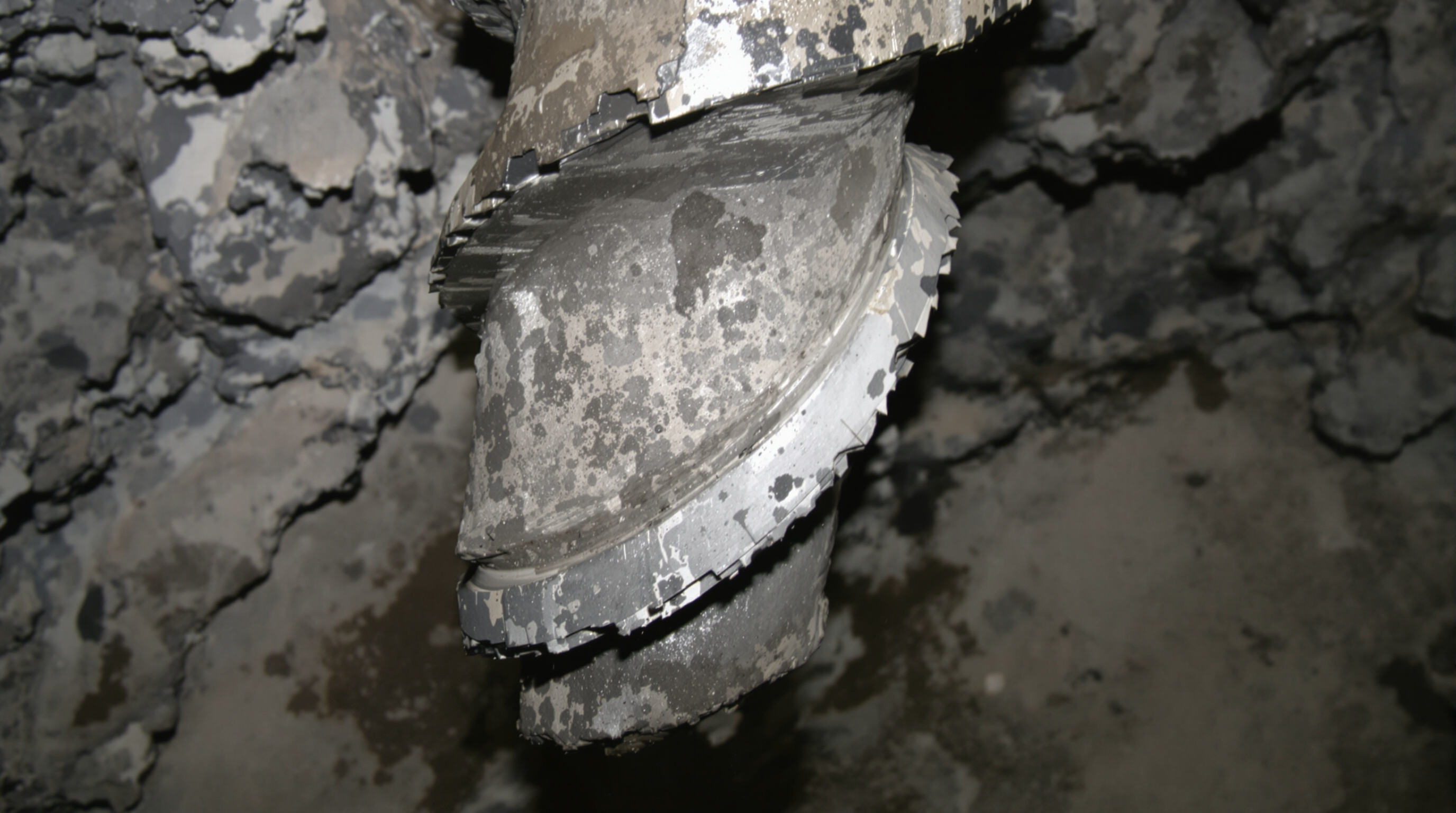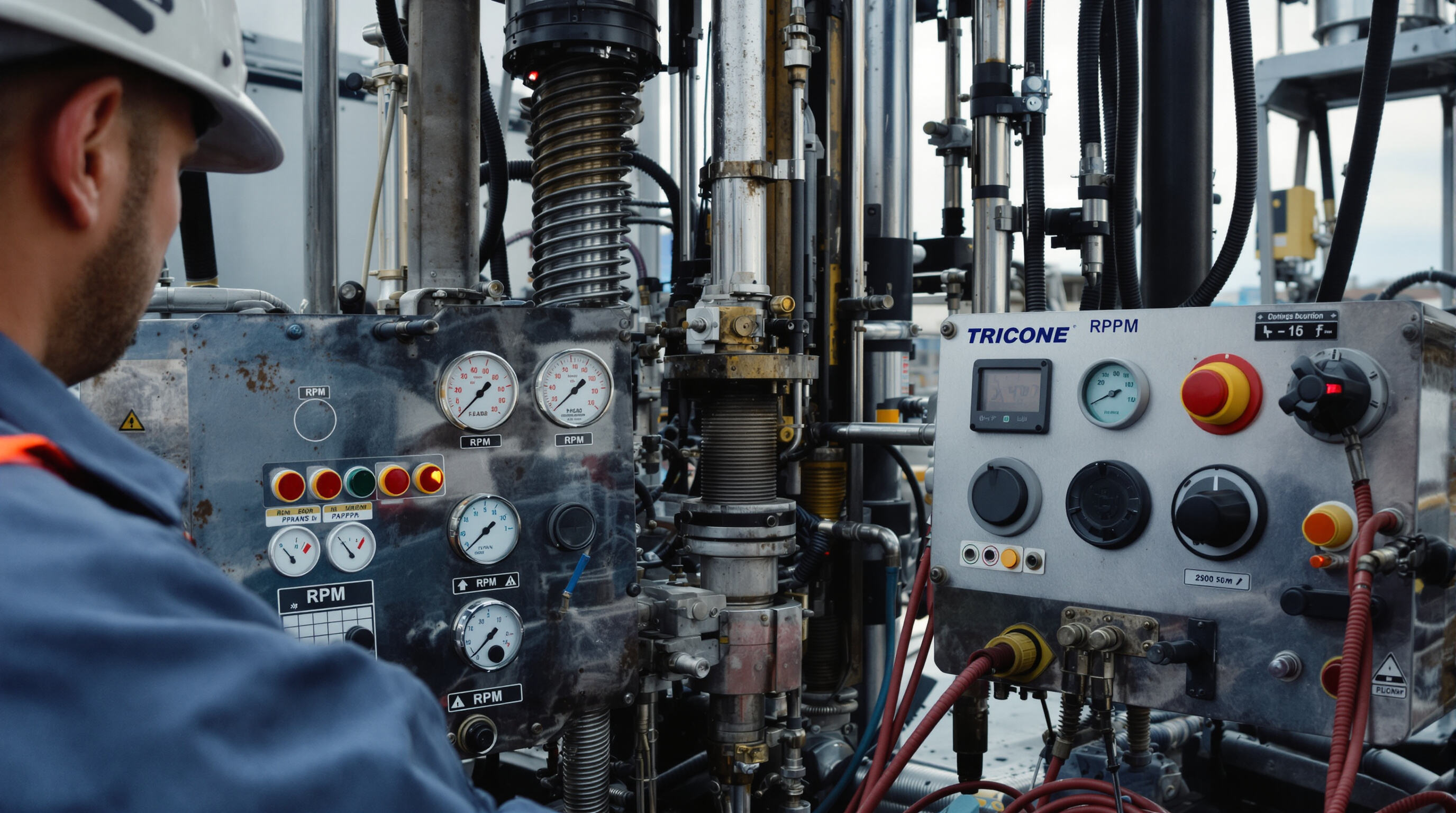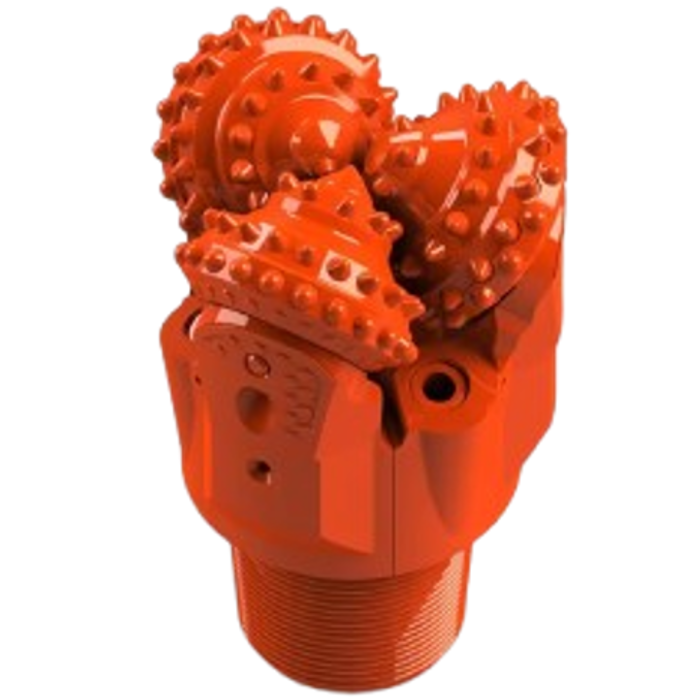Understanding Tricone Drill Bit Wear and Common Damage Causes
Common Causes of Drill Bit Damage

Most tricone drill bits break down because of three main issues. First, there's the constant grinding against rocks that wears them down over time. Then we get hit with those powerful impacts when drilling through really tough formations. And let's not forget about heat problems when the cooling isn't adequate enough. According to research published last year, around two thirds of early failures happen simply because operators didn't pick the right type of bit for what they were actually drilling into. Another quarter gets damaged just from not having enough lubrication running through the system. What makes things worse is when dirt builds up between those tiny bearings inside the bit. This kind of mess can make components wear out almost half as fast as they should if everything stays clean and well maintained throughout operations.
Identifying Signs of Wear Through Regular Visual Inspections
Operators should inspect teeth for chipping (2 mm indicates replacement urgency), check bearing play (axial movement >1.5 mm signals failure risk), and monitor seal integrity. The IADC grading system provides a standardized framework:
- Grade 1-2: Minor wear, adjust drilling parameters
- Grade 3-4: Moderate damage, schedule maintenance
- Grade 5+: Critical failure, immediate replacement required
Operational Mistakes That Reduce Durability
Five common errors account for 78% of avoidable wear:
- Excessive weight-on-bit beyond manufacturer limits (+15% force = 37% faster bearing degradation)
- Improper RPM for formation hardness (soft rock requires 20-30% lower rotation speeds)
- Continuously drilling through debris-filled holes
- Neglecting to flush cuttings during bit extraction
- Using worn stabilizers that induce lateral vibrations
A 2023 failure analysis demonstrated that correcting these operational flaws extended bit lifespan by 60% in granite formations, while reducing replacement costs by $18,400 per well.
Routine Inspection and Cleaning Procedures for Drill Bits
Step-by-step cleaning process to prevent debris accumulation and overheating
After each drilling operation, implement this cleaning protocol to maintain optimal performance:
- Allow the drill bit to cool completely before handling
- Use compressed air to clear debris from flushing holes and bearing areas
- Scrub external surfaces with a nylon brush to remove rock particles
- Inspect waterways for obstructions using a flashlight
- Apply rust inhibitor before storage in dry conditions
This process prevents material buildup that causes overheating and reduces friction-related wear by up to 40% according to drilling equipment studies. Blocked flushing channels increase operating temperatures by 15-20°C, accelerating component degradation.
Proper cleaning to maintain drill bit performance and prevent premature failure
Consistent cleaning preserves structural integrity by eliminating abrasive contaminants that grind against moving components. Research shows drill bits undergo 30% faster wear when residual debris remains between teeth and bearings. Focus cleaning efforts on:
- Bearing seals where fine particles accumulate
- Tooth roots where rock fragments wedge
- Waterway inlets that trap sediment
Neglecting these areas allows micro-abrasion that gradually reduces cutting efficiency and leads to catastrophic bearing failures. Establish post-operation cleaning as standard procedure to maximize service life between maintenance cycles.
Effective Lubrication and Corrosion Prevention for Long-Term Protection
How to prevent rust and corrosion in tricone drill bits
To fight off rust, we need to create barriers against moisture using special coatings and rust inhibiting oils that should be applied regularly after each operation. The way these treatments work is pretty simple they fill those tiny little pores in metal surfaces, stopping oxygen and water from getting in where the actual rust process begins. When dealing with really harsh conditions, there are things called vapor corrosion inhibitors or VCIs for short. These form this kind of invisible protective layer at the molecular level across metal surfaces. Studies from various industries show that if workers clean equipment thoroughly after use and then apply some sort of rust preventative spray, it can cut down corrosion problems by around 70% in mining machinery. And dont forget about drilling mud either. Get rid of it right away once operations are done because the chemicals in it will speed up oxidation if left sitting on metal overnight. That stuff just loves to eat away at surfaces when given time.
Effective lubrication practices that enhance bit durability
Precision lubrication extends bearing life by reducing friction heat by approximately 40°C according to bearing performance studies. Follow this protocol:
- Use extreme-pressure (EP) greases specifically formulated for high-load drilling applications
- Apply lubricant through sealed fittings before each shift using calibrated tools
- Monitor grease viscosity monthly since degraded lubricants lose 80% of protective properties
- Implement automated lubrication systems for consistent coverage in complex bearing assemblies
Under-lubrication causes metal-to-metal contact while over-lubrication attracts abrasive particles—both scenarios accelerate wear. Establish maintenance logs to track lubrication schedules against bit performance metrics.
Protecting drill bits from moisture and contaminants during operation and storage
Deploy multi-layered defense against environmental threats:
- During operations: Install rubber bellows seals on bearing chambers to block slurry ingress
- Post-operation: Triple-rinse with compressed air, solvent baths, and dehydration sprays
-
Storage: Utilize silica gel canisters in airtight containers maintaining <30% humidity
Controlled environment storage prevents condensation cycles that cause flash rust, while palletized storage avoids ground moisture wicking. For extended preservation, vacuum-sealing with desiccants provides 18–24 months of corrosion-free protection according to industrial preservation standards.
Proper Handling, Storage, and Environmental Protection
Best practices for handling to avoid physical damage
When moving tricone drill bits around, it's best to grab them at those strongest spots with both hands for stability. For the heavier ones, mechanical lifts really come in handy because dropping these bad boys can crack those expensive tungsten carbide pieces or mess up the bearing alignment completely. Make sure to put protective covers over the cutting parts whenever they're sitting idle, and never just pile bits straight onto concrete floors or steel benches. We've seen too many instances where workers accidentally nicked bits with wrenches or hammer strikes while transporting them between stations. These little dents might seem minor at first glance but they actually weaken the whole structure over time, leading to premature failure down the line.
Correct storage practices for short-term and long-term preservation
| Storage Duration | Key Practices |
|---|---|
| Short-term (≤30 days) | Clean thoroughly, apply light corrosion inhibitor, store vertically in dry area |
| Long-term (>30 days) | Disassemble cones, coat all metal surfaces with heavy-duty rust preventive, wrap in VCI paper |
For both durations, use padded racks that suspend bits off concrete floors to prevent moisture absorption. Rotate stock quarterly using FIFO (First-In-First-Out) systems to ensure even usage distribution across your drill bit inventory.
Avoiding temperature and humidity risks in storage environments
Keeping storage areas within a consistent temperature range of around 50 to 80 degrees Fahrenheit (about 10 to 27 Celsius) while maintaining humidity levels under 50 percent relative humidity helps stop condensation from forming on stored items. Many warehouses find it helpful to install desiccant systems inside sealed containers and regularly check moisture levels using digital hygrometers for accurate readings. It's also wise not to store sensitive materials too close to exterior doors, window openings, or heating/cooling ducts since these spots tend to experience rapid temperature changes sometimes exceeding five degrees per hour. Businesses located along coastlines or in other areas with naturally high humidity should seriously consider investing in climate controlled storage solutions equipped with backup dehumidification capabilities. These extra precautions become especially important when dealing with equipment vulnerable to damage from salt laden air that can cause corrosion over time.
Optimizing Drilling Parameters to Maximize Drill Bit Longevity

Matching RPM, Weight, and Feed Rate to Formation Types
Getting the right balance between rotational speed (RPM), weight on bit (WOB), and feed rate according to what's underground really matters when trying to make those tricone drill bits last longer. When drilling through tough stuff like granite, operators need to slow things down to around 50 to 80 RPM but apply more pressure on the bit, somewhere between 8 and 12 tons. This helps cut down on the stress on the bearings and stops those teeth from wearing out too fast. On the flip side, working with softer sedimentary rock means spinning the bit much quicker, about 120 to 150 RPM, while keeping the load lighter at 4 to 6 tons. This setup keeps the cutting going efficiently without letting the whole system overheat.
Recent industry benchmarks show that improper parameter selection accounts for 37% of premature bit failures (Drilling Efficiency Report 2023). Operators can reference this guide to optimize settings:
| Formation Type | Ideal RPM | WOB Range (tons) | Feed Rate (m/h) |
|---|---|---|---|
| Granite | 50−80 | 8−12 | 1.2−1.8 |
| Sandstone | 90−120 | 6−8 | 2.5−3.5 |
| Limestone | 120−150 | 4−6 | 4.0−5.0 |
Case Study: Performance Gains From Parameter Calibration in Hard Rock Drilling
In a real world test at a quartzite quarry back in 2023, changing some key drilling parameters actually made drill bits last much longer than usual. When they cut down the RPM speed from around 100 all the way down to just 65, and bumped up the weight on bit from about 7 tons to 10 tons, something interesting happened. The bits stayed functional for nearly 29% extra time, going from roughly 48 hours of drilling to making it through 62 hours before needing replacement. Pretty impressive considering they still managed to keep the same penetration rate of 1.6 meters per hour. What's even better? The whole setup ran cooler too, with temperatures dropping by about 18%. And let's not forget the money saved either. Each time they had to replace a bit, they were spending $2,400 less because these adjustments simply wore out the equipment slower.
FAQ
What are the main causes of tricone drill bit damage?
Tricone drill bits mainly suffer damage due to constant grinding against rocks, powerful impacts during drilling, and overheating issues from inadequate cooling. Other factors include choosing the wrong bit type for the formation and insufficient lubrication.
How can I identify signs of wear on my drill bits?
Regular visual inspections can help identify wear. Operators should look for teeth chipping, check bearing play, and monitor seal integrity using the IADC grading system. Keeping track of these factors signals when a drill bit needs maintenance or replacement.
What operational mistakes can reduce drill bit durability?
Five common operational mistakes include excessive weight-on-bit, improper RPM settings, drilling through debris-filled holes, neglecting to flush cuttings, and using worn stabilizers. Correcting these flaws can extend the lifespan of drill bits remarkably.
Why is cleaning drill bits important?
Cleaning drill bits prevents debris accumulation and overheating, preserving structural integrity and cutting efficiency. Consistent cleaning efforts focus on removing abrasive contaminants and preventing micro-abrasion that leads to premature failure.
How can I prevent rust and corrosion on drill bits?
To prevent rust and corrosion, apply special coatings and rust inhibiting oils regularly after operations. Use vapor corrosion inhibitors for harsher conditions and clean the equipment thoroughly post-operation to remove drilling mud residues.
Table of Contents
- Understanding Tricone Drill Bit Wear and Common Damage Causes
- Common Causes of Drill Bit Damage
- Identifying Signs of Wear Through Regular Visual Inspections
- Operational Mistakes That Reduce Durability
- Routine Inspection and Cleaning Procedures for Drill Bits
- Effective Lubrication and Corrosion Prevention for Long-Term Protection
- Proper Handling, Storage, and Environmental Protection
- Optimizing Drilling Parameters to Maximize Drill Bit Longevity
- FAQ


